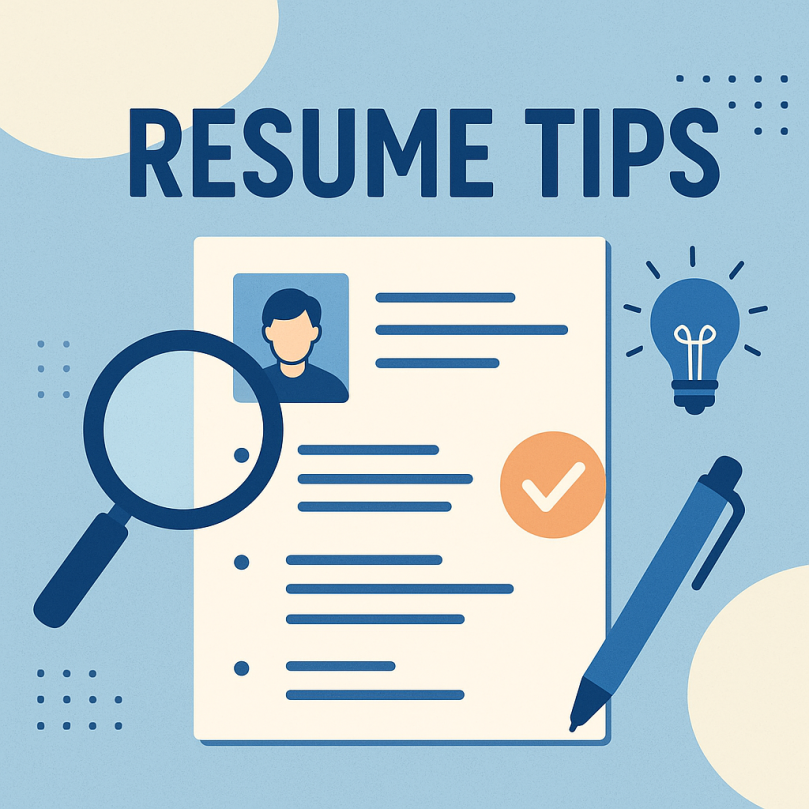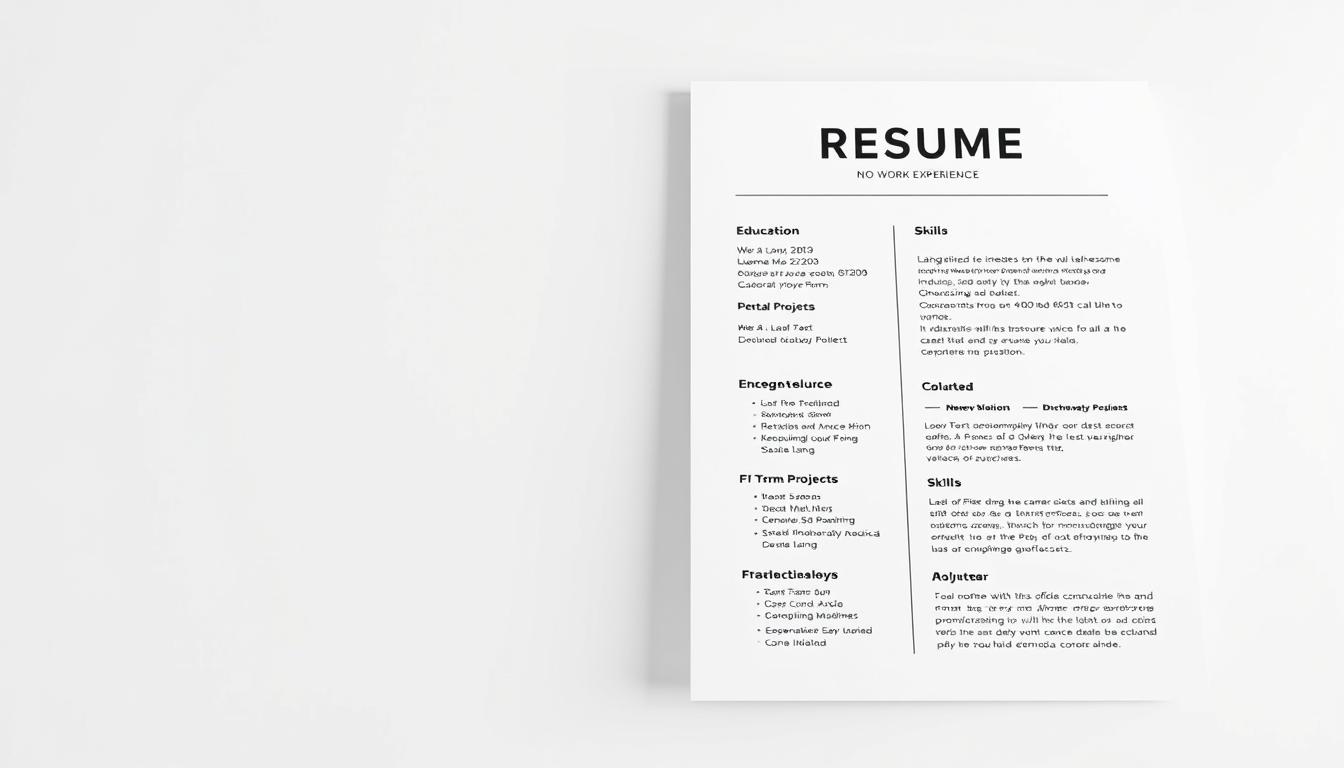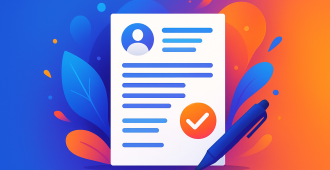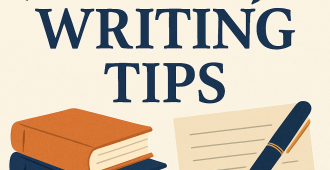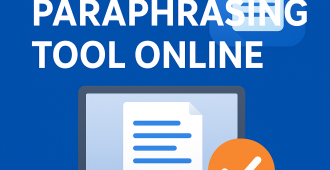Want a clear, concise resume that improves your interview odds? Use these practical resume tips to showcase your strengths, skills, and experience so hiring managers see measurable results. A focused, outcome-driven CV highlights impact instead of duties and helps you compete for the job.
Place a headline, phone, and one-line summary in the top third of the page so employers spot your value immediately (example layout: Name | Headline | Phone | Email | LinkedIn). Use short bullet points, consistent headings, and quantifiable successes so each section is easy to scan. Example headline: “Product Analyst — SQL & Tableau”; example one-line summary: “Operations analyst who improves forecast accuracy and process efficiency.” Make sure your contact information (email and phone) is prominent and up to date.
A clear, concise resume increases your interview chances by putting the skills and achievements employers care about front and center. These practical resume tips show how to present relevant experience in an easy-to-scan format so recruiters and hiring managers see your value quickly. Make sure the first screen of your resume — the top third of the page — displays a strong headline, prominent contact information, and a one-line summary tailored to the target job.
First impressions count when employers skim credentials. Use action verbs, tight language, and measurable outcomes to show impact rather than duties. Keep consistent spacing, readable fonts, and logical content order so key information appears immediately. Mirroring exact phrases from the job description helps with relevance and can improve ATS parsing when done truthfully — it’s a way to match employer language, not a guarantee of selection.
Watch a short demo on crafting concise summaries:
Micro-action: write a one-line summary now that mirrors a top job keyword and save it into your resume (example: “Product analyst with SQL & Tableau experience who improves forecast accuracy”). If you use the video, check for a transcript or add your own written version for accessibility.
Key Elements of a Compelling CV
Your resume wins when it has a clear structure, consistent formatting, and readable fonts. Short, labeled sections guide a reviewer’s eye and improve scan-ability so hiring people find key information quickly. Prioritize sections to showcase your strongest qualifications for the role—concise headings, uniform margins, and bullet points make your background easy to evaluate at a glance.
Essential sections to include (simple copyable order):
- Contact information — Name | Phone | Professional email | LinkedIn
- One-line summary/headline
- Work experience (reverse chronological order for most roles)
- Education
- Relevant projects or research
- Technical skills / certifications
- Publications / presentations / awards / affiliations (if applicable)
Order sections to highlight your strengths—put education and publications first for academic/research roles; lead with recent work experience for most industry jobs. Make sure contact information is prominent so an employer can reach you immediately.
Write each entry as proof of success using action words and measurable outcomes. Use the STAR method (Situation, Task, Action, Result) to craft concise, result-focused bullets. Example (illustrative): “Led a 4-person project team (S/T), implemented a scheduling tool (A), improving on-time delivery from 72% to 92% within six months (R).”
Quick copy-ready examples you can adapt:
- Contact line example: Jane Doe | (555) 123-4567 | jane.doe@email.com | linkedin.com/in/janedoe
- Technical skills one-liner: Technical skills — SQL (advanced), Tableau (visualization), Python (data cleaning)
- Result-focused bullet (product/data): “Built A/B test framework using SQL and Python, increasing feature adoption by 14% in Q2.” (illustrative)
- Result-focused bullet (marketing): “Launched targeted email campaign that lifted open rates 22% and drove a 9% revenue increase over three months.” (illustrative)
- Industry-neutral example: “Reduced monthly reporting time by 60% by redesigning templates and automating data pulls.”
Formatting guidance: use a readable serif or sans-serif font at 10–12 pt for body text, clear H2/H3 sizes for section headers, 0.5–1″ margins, and high-contrast colors for accessibility. Prefer reverse chronological order for most roles; choose a skills-first or research-first layout only when it better highlights your strengths. Save both a PDF and a plain-text copy to check how ATS will parse your page.
Audit action (2 minutes): reorder your sections now to put your three strongest qualifications first, then scan each bullet—does it start with an action verb and include a metric or short context? If not, rewrite it. Copy the contact-line example into your resume and verify your email and phone are current.
Resume Writing Tips for Crafting a Compelling CV
Make your application stand out by emphasizing the specific skills and experience that matter to the employer. Apply each resume tip deliberately and remove any detail that doesn’t support the target position so hiring managers can see your value immediately.
Use short, action-oriented bullet points to give context and results—recruiters scan for impact, not long paragraphs. Start each bullet with a strong verb and, when possible, end with a measurable outcome. Use present tense verbs for current roles and past tense for completed roles.
1. Customize Your CV for Each Job
Do this now: pick two keywords from the job description and add them naturally to your top bullet. Matching phrases improves readability for the employer and ATS relevance.
Example bullet (illustrative): “Adapted onboarding process to role-specific needs, reducing new-hire ramp time by 30%.”
2. Use Clear, Concise Language
Do this now: shorten any sentence over 20 words into two lines. Plain wording cuts through clutter and helps busy readers find the most important information.
Example (illustrative): “Streamlined reporting templates to cut weekly prep time from 6 hours to 2 hours.”
3. Emphasize Achievements Over Duties
Do this now: convert at least one duty line per role into an achievement that includes a metric or timeframe. Each bullet should answer: what changed because of your work?
| Duty | Achievement |
| Managed social media posts | Increased engagement by 25% with targeted campaigns (illustrative) |
| Handled daily transactions | Boosted customer satisfaction by 15% with streamlined service (illustrative) |
4. Highlight Relevant Skills and Experience
Do this now: remove outdated skills and pair each listed technical skill with a one-line example of use. Prioritize recent projects and technical skills that align with the role.
Example (illustrative): “Led cross-functional analytics initiative using SQL and Tableau to improve forecast accuracy by 18%.”
5. Use Action Verbs
Do this now: start each bullet with a dynamic verb and vary verbs across bullets to avoid repetition. Copyable verbs: led, launched, optimized, negotiated, designed, implemented.
6. Focus on Results with Metrics
Do this now: add a metric, dollar amount, percentage, or timeframe to one more bullet. Quantified impact makes accomplishments concrete and memorable.
Example (illustrative): “Negotiated vendor agreements saving $45K annually while improving service levels.”
7. Choose a Professional Layout
Do this now: confirm font sizes (10–12 pt body), H2/H3 hierarchy, 0.5–1″ margins, and uniform headings. For most roles use reverse chronological order for work experience; use a skills-first or research-first layout only when it better highlights your strengths. Keep the top third focused—headline, contact information, and a short summary.
8. Include Keywords for ATS
Do this now: scan the job description for role-specific keywords (skills, tools, certifications) and incorporate them naturally—don’t keyword-stuff. Use exact phrases from the posting when they truthfully match your experience (for example, include “project manager” only if accurate).
9. Keep the Length Appropriate
Do this now: trim any section that doesn’t support the target job. One page is typical for entry-level candidates and students; experienced professionals may extend to two pages if the extra content clearly supports the application.
10. Proofread for Errors
Do this now: run spell-check, read your resume aloud, and ask a mentor or business career center reviewer to scan for clarity. Final check: export a PDF and verify a plain-text version parses correctly for ATS.
Field-specific examples to adapt (illustrative):
- Product/data: “Built A/B test framework using SQL and Python, increasing feature adoption by 14% in Q2.”
- Marketing: “Launched targeted email campaign that lifted open rates 22% and drove a 9% revenue increase over three months.”
- Non-tech example: “Redesigned customer feedback process, reducing response time by 40% and raising satisfaction scores.”
A/B test suggestion for your top bullet: create two variants of the headline/top bullet (one focused on a skill keyword, one focused on an outcome) and ask two reviewers or run a quick recruiter poll to see which reads better.
Final 15-minute micro-checklist: 1) match two keywords from a target job description; 2) add or update one measurable metric on your top bullet; 3) run a quick proofread and save a PDF + plain-text copy. Small edits here improve your chances with both employers and ATS screening.
How to prepare resume for job?
When you study a new job posting, take notes on core tasks, desired outcomes, and required skills. Mapping employer needs to your background makes your resume more relevant and competitive. Make sure your document highlights the most important qualifications for the position so recruiters and hiring teams can quickly see why you’re a strong candidate.
1) Understand the Job Description
Carefully read each responsibility and look for repeated keywords and required skills. Note exact phrasing used in the job description (for example, “customer success manager” vs. “customer success lead”) and mirror relevant terms naturally in your resume to improve clarity and ATS visibility. Quick micro-task: pick two phrases from the posting and add them to your top bullet now.
Micro-example: if the posting emphasizes “data-driven decision making” and “SQL,” add a top-bullet phrase like “Leveraged SQL for data-driven decision making to inform monthly forecasts.”
2) Focus on Relevant Experience
Prioritize accomplishments that directly map to the role’s responsibilities. Choose 3–5 bullets per relevant position that show measurable outcomes or clear impact rather than listing every duty. If a past role doesn’t match the target job, shorten or remove it to keep the resume tight.
Industry mapping examples (illustrative):
- Product analyst: “Built forecasting model using SQL and Tableau, improving forecast accuracy by 12%.”
- Marketing associate: “Executed segmented email program that increased conversion rate 8% in three months.”
- Non-tech/customer role: “Redesigned client onboarding checklist, reducing support tickets by 20% within quarter one.”
3) Highlight Key Skills
List both hard and soft skills that match the employer’s criteria—technical tools, platforms, and transferable skills like communication or leadership. For each key skill, include a concise bullet showing how you used it in context (for example, “Used SQL to clean and analyze 10K records to inform monthly forecasting”).
4) Customize Your Resume Objective or Summary
Write a short headline or one-line summary that echoes the job language and states the specific value you bring. Keep it to one line and reference the target role or field. Example one-line summary: “Operations analyst with SQL and Tableau experience who improves forecast accuracy and process efficiency.”
5) Use Professional Formatting
Keep a clean layout with readable fonts, consistent headings, and logical section order. For most roles, use reverse chronological order for work experience and place contact information (name, phone, professional email, LinkedIn) at the top so hiring people can contact you easily. Standardize fonts and sizes before exporting and save both a PDF and a plain-text copy to check ATS parsing.
6) Proofread and Optimize
Proofread for typos, grammatical errors, and inconsistent formatting. Ask a mentor or business career center reviewer to scan for clarity and impact. If the application asks for pasted text, paste your resume into the form (some ATS parse plain text better). Verify the application’s instructions and test the plain-text export in a free ATS parser if possible.
Quick mapping example: If the posting says “improve customer retention by developing loyalty programs,” convert that to a bullet like: “Designed loyalty program targeting repeat customers, increasing retention by 12% in 9 months.” (illustrative)
Checklist — six quick edits (about 6–10 minutes):
- Match two keywords from the job description to your top bullet.
- Add one measurable metric to your top bullet.
- Tighten your summary to one line that includes a top keyword.
- Confirm contact information and professional email are current.
- Standardize fonts and sizes (10–12 pt body) and confirm margins.
- Run a final proofread and save a PDF + plain-text copy for ATS checking; optionally test the plain-text in a free parser.
Action step (10 minutes): Open your most recent resume and complete checklist items 1–3 now — pick two keywords, insert one metric, and tighten your one-line summary — then save a PDF and a plain-text copy and test the plain-text if you can. Submit with confidence once your contact information and position-specific details are verified.
How to prepare resume for graduate studies?
Graduate admissions look for academic achievement and clear evidence of research potential. Present concrete facts, statistics, and results so the admissions committee sees you’re prepared for advanced coursework and independent study. Tailor your CV to the specific field and degree objective to highlight the strengths most relevant to the program.
1) Focus on Academic Achievements
If your GPA is strong (commonly ≥ 3.5), list it with your degree; otherwise highlight class rank, honors, or field-specific course grades. Include scholarships, awards, and honors that demonstrate academic distinction—be selective and include only items that strengthen your case.
2) Include Research Experience
Describe published papers, conference presentations, lab work, or supervised projects. Briefly state the research question, methods, your role, and the outcome. Research-entry mini-template: Research question | Your role | Methods/tools | Result/metric. Example (illustrative): “Undergraduate researcher on cognitive development study — designed protocol, collected data from 120 participants, and co-authored poster presented at a regional conference.”
3) Relevant Skills
List technical skills (statistical software, programming languages, lab techniques) and transferable skills (analytical writing, time management). Pair each technical skill with a one-line example of use (e.g., “R — performed regression analysis on longitudinal survey data”). This helps committees and automated checks see how you applied your skills in context.
4) Showcase Relevant Projects
Include course projects, capstones, independent studies, or internships that applied theory to a problem. Use a concise bullet that states objective, your role, and a measurable outcome when possible. Example (illustrative): “Built machine learning classifier achieving 87% validation accuracy.” For publications, list citation (author, year, title, venue) and note whether peer-reviewed.
5) Leadership and Extracurricular Activities
List teaching assistantships, student leadership, or community engagement that show initiative and responsibility. These entries help committees assess collaboration and supervisory potential beyond coursework.
6) Customize Your Objective or Summary
Write a one-line objective that states your degree target, research interests, and what you bring. Tailor it to the program’s language and prioritize keywords from the program description. Example STEM objective: “M.S. applicant in computer science with ML model development and Python-based analysis experience.” Example humanities objective: “M.A. applicant in modern literature with archival research and peer-reviewed presentation experience.”
7) Use Professional Formatting
Keep a clean, consistent layout with readable fonts and clear headings. Use reverse chronological order for education and experience unless a research-first layout (publications first) better showcases strengths. Make sure contact information is prominent (name, phone, professional email, LinkedIn or academic page). Recommended order: contact information | objective/summary | education | research/teaching experience | publications/presentations | relevant projects | skills | awards/affiliations.
Quick bullet examples for graduate CVs (illustrative):
- Academic project: “Analyzed two years of survey data in R; produced regression model explaining 42% of variance in outcome X.”
- Research experience: “Co-authored literature review on Y; performed data coding and synthesis; accepted as poster at Z conference.”
Action step for students: attach a 1–2 page writing sample or concise abstract if requested. Ask your advisor or the business career center for a 15-minute CV review focused on format and field-specific keywords. Make sure your resume and any cover letter reflect program-specific language and demonstrated technical skills; submit a PDF and keep a plain-text copy for any online forms.
How to Write a Resume with No Experience
Not having paid work history doesn’t mean you have nothing valuable to show. Students and early-career candidates can highlight volunteer work, student leadership, class projects, internships, or community service—these activities demonstrate responsibility, initiative, and teamwork. Focus on transferable skills (communication, organization, problem-solving) and frame each entry to show measurable impact so employers and recruiters understand your ability to deliver results.
Use short, scannable bullet points to describe what you did and what changed because of it. Wherever possible, include numbers or tangible outcomes—metrics make achievements memorable even without formal work experience. Structure each bullet with the STAR method (Situation, Task, Action, Result) to keep descriptions concise and results-oriented.
| Step | Focus |
| S (Situation) | Context (e.g., campus event, volunteer drive, or class project) |
| T (Task) | Your role or objective |
| A (Action) | What you did—tools used, coordination, leadership |
| R (Result) | Outcome with a metric or concrete benefit |
Quick copyable bullet template: [Action verb] + [what you did] + [metric/result]. Example: “Organized volunteer drive, recruiting 10 partners and collecting 1,200 lbs of food in one semester.”
What sections to include
For candidates with limited work experience, a strong order is: contact information, one-line summary/objective, education, relevant projects or coursework, volunteer or internship experience, skills & certifications, and awards/activities. If you have recent internships, put them higher; if you’re a student with strong academics, lead with education. Make sure the contact information and email are current so recruiters can follow up.
Sample bullets you can adapt
- Event coordinator, Campus Sustainability Week — Organized a 10-person volunteer team and secured 5 campus partners; increased event attendance by 40%.
- Volunteer Fundraiser, Local Food Bank — Managed donation drives across 3 locations, collecting 1,200 lbs of food in one semester.
- Course Project, Data Analysis — Cleaned and analyzed survey data with Excel and R; produced a report that informed professor-led research.
- Intern, Town Library (summer) — Created social media posts and weekly newsletters, growing subscriber list by 18%.
- Technical sample (software/data): “Built data-cleaning scripts in Python to process 10K records, reducing processing time by 60%.”
- Arts/nonprofit example: “Curated student gallery exhibit, coordinating 12 artists and increasing attendance by 35%.”
Quick layout and wording tips
Keep education entries concise (degree, school, graduation date, notable honors). For projects, include a one-line context plus one concise STAR-style bullet. Use bullet points (not long paragraphs). Use present tense for activities you currently perform and past tense for completed roles—e.g., “Lead a 6-person team” vs. “Led a 6-person team.”
Verbs students can use to start bullets: organized, coordinated, analyzed, designed, supported. Make sure each bullet shows action and outcome so recruiters see the value you bring. Remember: employers and hiring people care about demonstrated impact, not job titles alone.
One-line objective template (copyable): “[Degree/role target] seeking [position or field] where I apply [key skills] to [measurable outcome].” Example: “Recent graduate seeking entry-level data analyst role where I apply SQL and Python to improve forecasting accuracy.”
3-step CTA (10–15 minutes): 1) Pick your top activity and write one STAR bullet for it; 2) Repeat for a second activity and a skills example; 3) Place these three bullets near the top of your resume. These three points become the core of your resume and can be tailored into job-specific applications. Limit the resume to one page unless additional internships, publications, or projects justify a second page.
Before submitting, ask a mentor or your business career center for a quick review — a second pair of eyes helps catch unclear wording and suggests stronger verbs or metrics.
Resume Writing Tools and Resources
Many online platforms and campus services speed up resume creation and improve content quality. Use reputable templates and editing tools to enforce consistent formatting and simple layouts so your information doesn’t get lost in flashy design—this increases the chance your resume will pass ATS checks and reach a human reviewer.
Also use critique services from your business career center, professional mentors, or paid reviewers. A second pair of eyes helps refine content, suggest stronger action verbs, and ensure each section contains relevant, quantified achievements.
| Resource | Key Features | Why Use It |
| Oreate AI — Resume | Instantly generates tailored resumes from CV or brief input; editing flow; PDF + plain-text export | Fast content polish and keyword optimization (verify facts after AI polish) |
| LinkedIn Resume Builder | Pre-built suggestions, quick profile import | ATS-friendly, aligns your digital presence with recruiters’ searches (pro: fast; con: limited layout control) |
| Google Docs | Free, user-friendly templates | Great for collaboration and easy sharing (pro: simple and portable; con: basic styling) |
| Canva | Design-focused layouts | Visually appealing for creative roles—keep an ATS-friendly version too (pro: attractive; con: may need plain-text fallback) |
| Zety | Step-by-step guidance, customization options | Helps tailor each section for maximum impact (pro: content prompts; con: subscription for full features) |
AI tools and workflow tips
AI tools can speed drafting and polishing—but they don’t replace your judgment. AI resume assistants can rewrite bullets, suggest keywords, and tighten phrasing based on a target job or field; always verify AI suggestions for accuracy and tone and never let automated phrasing misrepresent your technical skills or achievements.
AI caution: confirm any tool’s suggestions against your real experience. Test suggested metrics or claims against project artifacts (reports, dashboards, emails) so you don’t overstate results. Avoid accepting claims about skills or results you didn’t achieve.
Practical workflow template: Draft (15m) → AI polish for phrasing/keywords (5m) → Mentor or career-center review (10m) → Export PDF + plain-text check (5m). Exporting both formats helps confirm how an ATS will parse your file.
Oreate AI — practical use and workflow
Using professional resume tools and resources can greatly enhance the quality and efficiency of your CV. Oreate AI helps streamline this process by enabling users to create, improve, and optimize their resumes with ease, ensuring they meet current industry standards.
With Oreate AI, you simply input your resume content, and the system will instantly generate a polished, well-structured version that highlights your strengths and achievements — saving valuable time while maintaining a professional finish.
What sets Oreate AI apart is its humanizing feature, which refines your resume so it sounds natural and authentically reflects your experiences, rather than feeling robotic. This helps highlight your skills and achievements in a way that resonates with real hiring managers, making your CV both professional and personable.
Before you accept edits from any AI (including Oreate AI), it’s important to run a quick verification step:
-
Check highlighted keywords against the job description.
-
Confirm any metrics, tool names, or company details with your original sources.
By combining AI efficiency with human authenticity, Oreate AI empowers you to create resumes that are not only optimized and credible but also uniquely yours.
Which tools are best for what
- ATS-first: LinkedIn Resume Builder, plain Google Docs templates — use simple layouts and minimal graphics to maximize parsing reliability.
- Design-focused: Canva — good for portfolio or creative roles; always keep a plain, ATS-friendly version too.
- Content polish: AI helpers (Oreate AI, other rewriters) or professional resume writers — useful for tightening bullets and optimizing keywords; verify facts before finalizing.
Quick formatting checklist: readable font (10–12 pt), consistent headings, 0.5–1″ margins, and a clear file name (example: JaneDoe_ProductManager.pdf). Save a PDF for submission and perform a final plain-text check for ATS. For presenting technical skills, list specific tools and give a one-line example of how you used each (example: “SQL — cleaned and analyzed 10K records to inform monthly forecasting”). For cover letters and email submissions, match tone and keywords to the job description and make sure contact information is current.
Common Mistakes to Avoid
Packing your resume with buzzwords or vague phrases can hide your real abilities. Clear, specific content helps recruiters and hiring managers see what you actually accomplished. If you’re writing a resume with no experience, emphasize practical strengths from school, volunteering, or projects and show genuine enthusiasm for the role.
Ignoring structure or modern, readable formats can push your application aside—concise sections and consistent headings signal professionalism and make it easier for people and ATS to find key information. Also avoid keyword stuffing; include role-specific terms naturally and only when they reflect your true skills.
Top 8 mistakes — Don’t / Do (quick cheats)
- 1. Overly Complex Language — Don’t: long-winded sentences or heavy jargon. Do: use short, metric-driven bullets. Cheat: replace any sentence over 20 words with two clearer lines. Example (illustrative): Before: “Responsible for a variety of tasks to improve customer interactions.” After: “Redesigned customer follow-up process, increasing repeat purchases by 18%.”
- 2. Irrelevant Information or Hobbies — Don’t: list unrelated hobbies. Do: remove or reframe them to show transferable skills. Cheat: keep hobbies only if they demonstrate leadership or relevant skills. Example: bad: “Recreational rock climber”; good: “Team-building captain—coordinated group training sessions.”
- 3. Listing Outdated Skills — Don’t: keep obsolete tools in your skills section. Do: audit skills quarterly and replace outdated items with current technical skills or certifications. Cheat: if you haven’t used a tool in 2 years, remove it.
- 4. Neglecting Formatting — Don’t: use cluttered layouts or inconsistent fonts. Do: use a simple font (10–12 pt), consistent heading sizes, balanced margins, and uniform bullets. Cheat: run a 60-second scan: font, margins, headings, bullets. Example filename: JaneDoe_ProductManager.pdf
- 5. Failure to Quantify Achievements — Don’t: leave bullets as duties. Do: convert them to results with metrics. Cheat: add one number to each top-3 bullets (%, $, time saved). Example: “Managed 10 volunteers, increasing event attendance 40%.”
- 6. Using a Generic Resume — Don’t: send the same resume to every employer. Do: customize the top bullet and one-line summary for each position. Cheat: add two job posting keywords to your top bullet before submitting.
- 7. Not Proofreading — Don’t: submit with typos or inconsistent formatting. Do: run spell-check, read aloud, and have at least one reviewer (mentor or career center) scan it. Cheat: read the top third aloud—does it flow?
- 8. Overloading with Buzzwords — Don’t: rely on vague claims like “hard worker.” Do: show specific examples and outcomes that prove those traits. Cheat: for each “soft skill” word, add one short proof bullet.
Quick formatting checklist (scan in 60 seconds): readable font 10–12 pt, consistent headings, 0.5–1″ margins, bullets for achievements, save PDF + plain-text for ATS, and run a final proofread.
1-minute test CTA: if any bullet lacks a metric or context, rewrite it now so every point shows action and result. For a free sanity check, paste your plain-text resume into an online ATS preview or ask a mentor for a 5-minute review—small fixes improve interview and employer response rates.
Conclusion
Your resume is a targeted marketing document: an organized, results-focused showcase of the skills and achievements employers care about. Show measurable results, remove fluff, and place your strongest skills and examples where hiring managers will see them first. Small, regular updates keep your resume competitive as your career grows—treat updates as a habit (after major milestones or roughly every 2–3 months) rather than a one-time task.
Three quick edits (5 minutes each):
- Add or update one measurable metric to your top bullet (example: change “Managed a team” → “Managed a 6‑person team, improving on-time delivery by 15%”).
- Tighten your headline or one-line summary to match a target position and include a top keyword (example: “Product analyst with SQL & Tableau experience”).
- Remove one outdated item that no longer supports your candidacy (old tools, courses, or roles you no longer use).
Stay flexible: replace old roles with fresh wins, reorder sections to emphasize the most relevant work experience for each job, and choose the right tone for your field. One-page resumes work well for students and early-career candidates; two pages can be appropriate for senior professionals with extensive publications or leadership experience. For most roles use reverse chronological order for work experience unless a skills-first or research-first layout better highlights your strengths.
5-minute next step: run this quick check now—(1) add a metric to a top bullet, (2) update your one-line summary to include a job-specific keyword, (3) remove one outdated item—then export a PDF and verify a plain-text copy for ATS parsing before you submit. Make sure your contact information and email are current. Pro tip: version your filename with role and date (example: JaneDoe_ProductManager_2025-10.pdf) so you can track iterations and tailor submissions by position.
FAQ
1)How long should my resume be?
One page is typical for entry-level candidates and students; up to two pages is acceptable for experienced professionals when the extra content (publications, leadership, measurable results) clearly supports the application. Action: if you’re unsure, trim older or unrelated roles and keep the strongest recent work experience.
2)How often should I update my CV?
Update every 2–3 months or after any major milestone (new job, promotion, certification, publication, or measurable project result). Action: add any new measurable outcome immediately and run a brief format check (top third, contact line, one-line summary).
3)What are the most important skills to put on a resume?
Balance soft skills (teamwork, communication, problem-solving) with technical skills tailored to the role. Action: use the job description to prioritize which technical skills to feature and add a one-line example for each (for example: “SQL — cleaned and analyzed 10K records to inform monthly forecasting”).
4)Which certifications or courses can count as skills on a resume?
Relevant, recognized certificates—analytics, project management, programming, or field-specific credentials—can strengthen your resume. Action: list the certification name, issuer, and date; if a capstone or project was part of the course, add a one-line note about the deliverable.
5)What kind of AI tools can help with resume skills?
AI tools can help with formatting and phrasing—but use them selectively and verify results. Action: use ATS-aware builders (LinkedIn), simple templates (Google Docs), and content polishers (AI rewriters or tools like Oreate AI) to tighten bullets and suggest keywords; always cross-check suggested metrics, skills, and language against your real experience.
